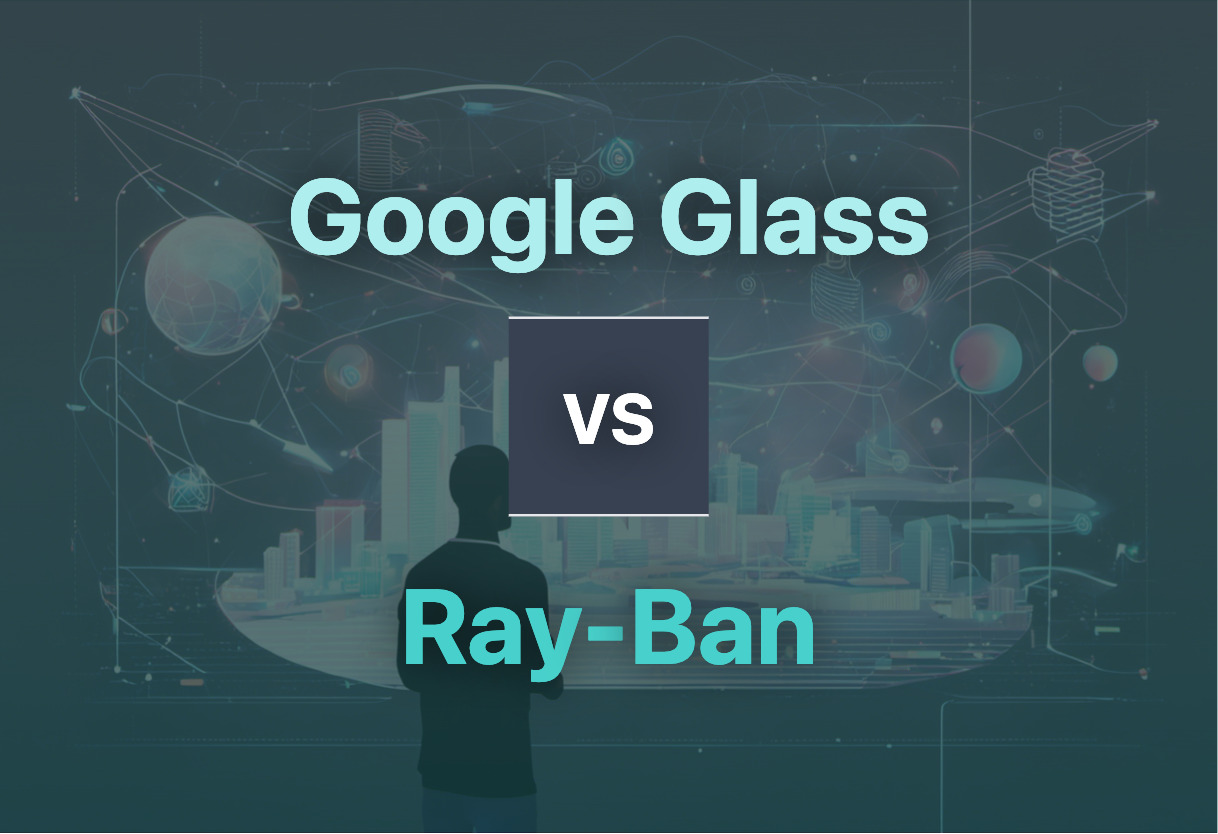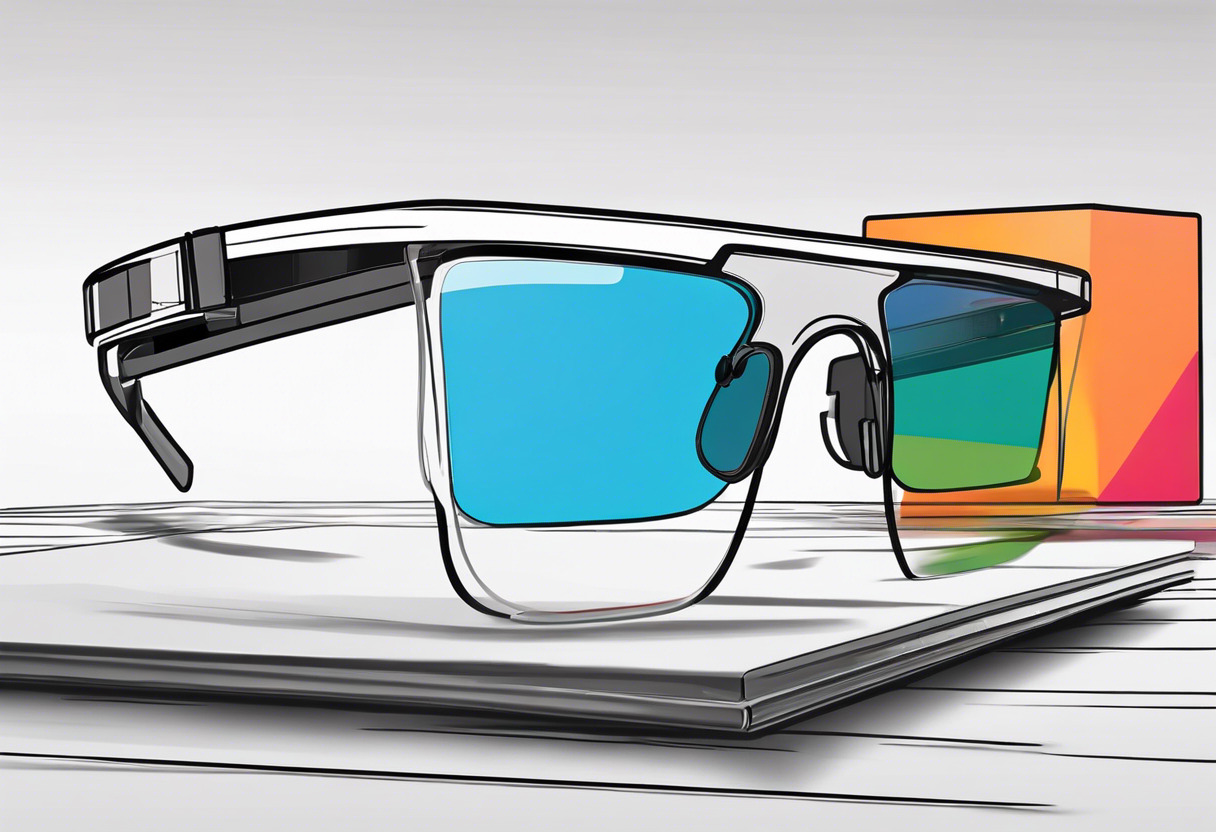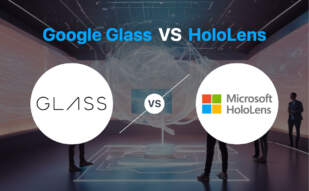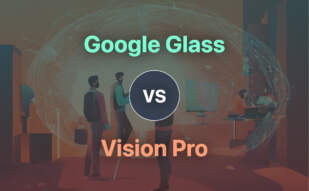For developers seeking professional augmented reality solutions, Google Glass Enterprise Edition 2 is the preferable option. It offers a hands-free, versatile Android device with voice/motion control, robust software integration, and real-time updates. However, for wearable tech appealing to broader consumer markets, Ray-Ban Stories, with its iconic designs supplemented with modern features, makes a compelling statement.

Key Differences Between Google Glass and Ray-Ban
- Origin: Google Glass is a high-tech AR device from a tech giant, while Ray-Ban is a traditional eyewear brand venturing into smart glasses with Facebook.
- Focus: Google Glass emphasizes on professional use in factories, hospitals, etc., while Ray-Ban targets general consumers.
- Features: Both offer features like photo/video capture, but Google Glass exceeds with voice controls, Third-party app integrations, and real-time updates.
- Design: Google Glass sports a futuristic aesthetic, whereas Ray-Ban sticks to its timeless classic frames.
| Comparison | Google Glass | Ray-Ban |
|---|---|---|
| Initial Release | 2013 | 1936 |
| Latest Version | Glass Enterprise Edition 2 (2019) | Ray-Ban Stories (2021) |
| Primary Use | Professional (factories, hospitals, etc.) | Consumer (mainstream eyewear) |
| Technology | Augmented reality, voice/motion control | Smart glasses with built-in camera and Bluetooth earphones |
| Key Features | Wi-Fi/Bluetooth connectivity, Google services integration, Real-time updates via Google Now, Third-party app integration | Quality materials, Classic designs, built-in camera, Bluetooth earphones |
| Concerns | Privacy | Privacy, Counterfeit products |
What Is Google Glass and Who’s It For?
Google Glass, an audacious Android project, began as wearable tech designed to place necessary information right in your line of sight. Launched in 2013, it stirred debates around privacy and personal space but returned stronger in 2019 as Google Glass Enterprise Edition 2, honed for professional use in industries like healthcare and manufacturing.
For those predicting a hands-free future, Google Glass satisfies both curiosity and enterprise with visual, audio and location-based data sent straight to a semi-transparent screen on the user’s field of vision. Perfect for those who manifest efficiency, this wearable is a worker’s wonder, a surgeon’s assistant, and a manager’s marvel.

Pros of Google Glass
- Augmented reality experience
- Constant access to Google’s search engine and Google Now updates
- Voice-recognition for commands and dictation
- Enterprise versions create efficiencies in business environments
Cons of Google Glass
- Raised privacy concerns
- Head and facial movement controls may not be intuitive for all users
- Depicts a high-tech, expensive image which may not appeal to conservative consumers
What Is Ray-Ban and Who’s It For?
Ray-Ban, an iconic eyewear brand founded in 1936, continues to blend function with fashion. Starting with the US Army Air Corps, their blazing path of innovation lit the skies with Anti-Glare Aviator glasses that tamed the brightest rays. Over time, Ray-Ban found its way into Hollywood, becoming as classic as the characters wearing its frames.
Ray-Ban is for those who value design and functionality in their eye wear. From the vintage lover donning the Wayfarer, to the tech-savvy engaging with Ray-Ban Stories developed with Facebook Reality Labs, the brand accommodates a broad spectrum of style and technology enthusiasts.

Pros of Ray-Ban
- Enduring and iconic designs
- High-quality, durable products
- Diverse range of styles and customization options
- Innovative tech features in newer models like Ray-Ban Stories
Cons of Ray-Ban
- High-end price range
- Potential misuse issues due to integrated technology
- Prevalence of counterfeit products
Google Glass vs Ray-Ban: Making Your Choice
After sizing up the key facets of Google Glass and Ray-Ban, the ultimate choice zeroes in on specific user needs and preferences. Let’s dissect this further:
Tech-Savvy Professionals
For tech-savvy professionals in data-driven sectors such as factories, hospitals, and warehouses, Google Glass would be the choice. Its Android infrastructure, Wi-Fi/Bluetooth features, integration with Google services and third-party apps, coupled with voice/motion command functions offer diverse enterprise benefits.
AR/VR Developers
Google Glass also has a distinct edge for AR/VR developers with its immersive augmented reality experience backed up by visual, audio, and location-based inputs, paired with sync capabilities for phone/computer calendars.
Luxury Eyewear Enthusiasts
For luxury eyewear enthusiasts, the vibrant history and high-quality of Ray-Ban glasses would be a pull. Apart from classic designs, it offers advanced products like Ray-Ban Tech and Ray-Ban Stories, aligning heritage with tech-advancements.
Concerned Citizens
Amid growing privacy concerns, concerned citizens might tilt in favor of Ray-Ban. While both glasses have faced privacy issues, Ray-Ban has worked proactively against misuse and counterfeit trading.
Deciding between Google Glass and Ray-Ban boils down to professional utility versus brand legacy. While Google Glass optimally serves the tech-savvy and AR/VR developers, Ray-Ban appeals to luxury eyewear enthusiasts and privacy-concerned citizens.
Logan Bellbrook
Content writer @ Aircada with a knack for nature & AR/VR/XR. Blogging the intersection of tech & terrain.





